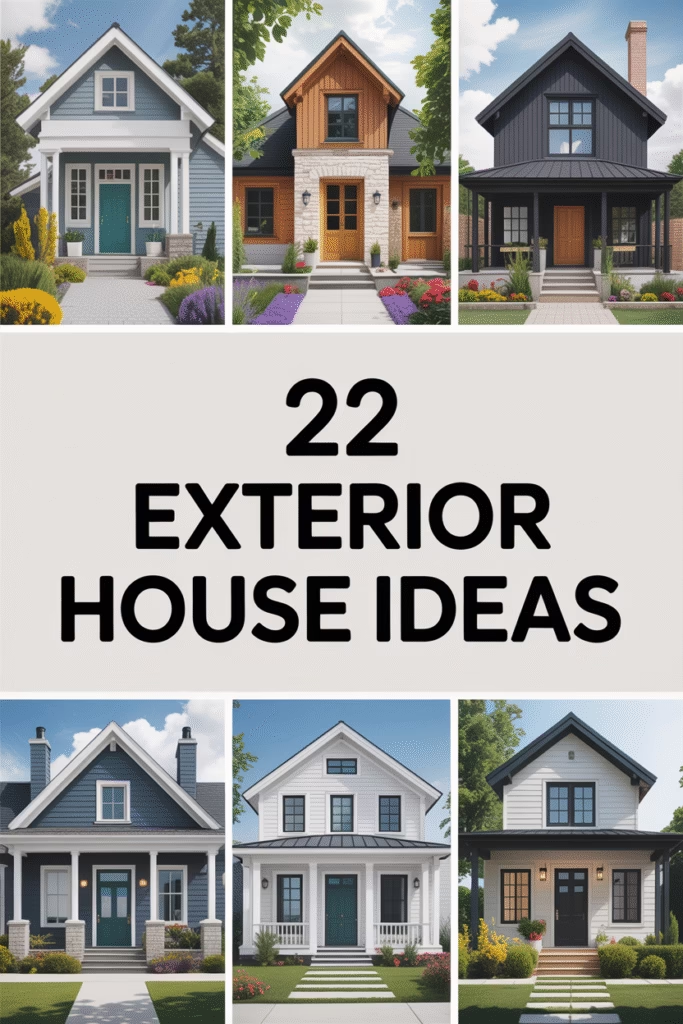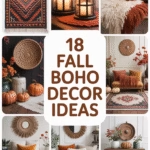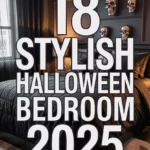The architectural landscape of 2025 is a vibrant tapestry of innovation, sustainability, and aesthetic boldness. As homeowners seek to express individuality while embracing eco-conscious living, Unique Exterior House Styles 2025 are redefining residential design. This article explores 22 groundbreaking exterior house styles that blend classic influences with futuristic trends, offering inspiration for those looking to transform their homes into modern masterpieces. From biophilic designs to tech-integrated facades, these styles are not only visually striking but also humanly possible to implement, ensuring practicality meets creativity. Whether you’re renovating or building anew, these ideas will set your home apart in the coming year.
22 Unique Exterior House Styles for 2025
1. Biophilic Vertical Gardens
Biophilic design continues to dominate in 2025, with vertical gardens transforming exterior walls into living ecosystems. These lush facades incorporate native plants, mosses, and vines, supported by automated irrigation systems embedded in modular panels. The panels use recycled materials, ensuring sustainability, while the greenery improves air quality and insulation. Homeowners can customize plant selections to reflect local biodiversity, creating a seamless blend with the environment.
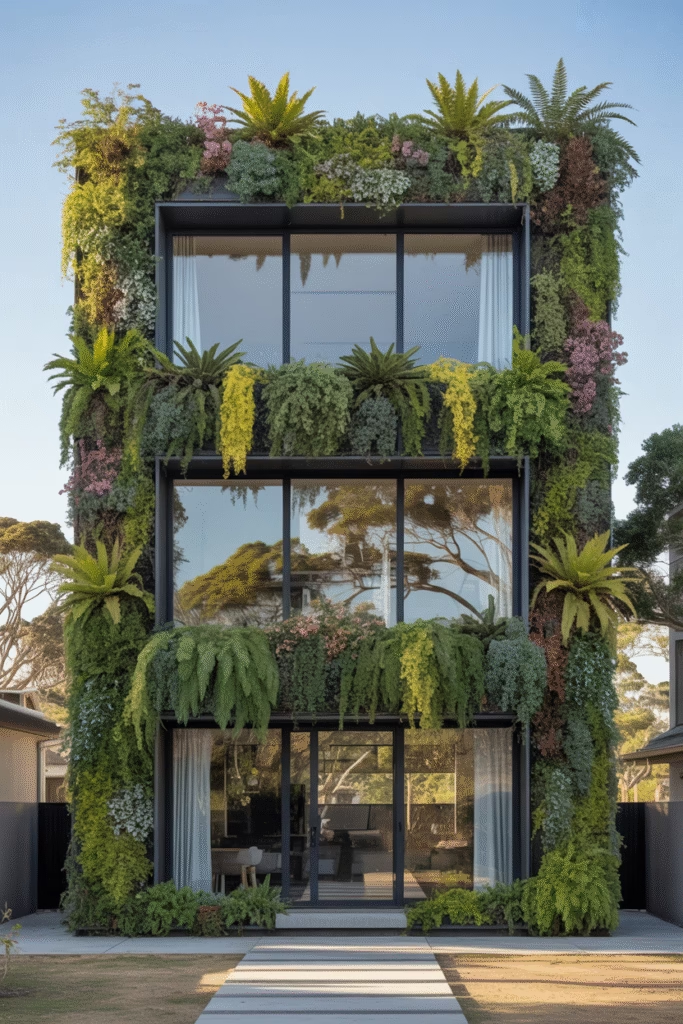
2. Kinetic Facades
Kinetic facades feature dynamic elements like motorized louvers or panels that adjust to sunlight, wind, or temperature. In 2025, these are made from lightweight composites and powered by solar energy, offering both aesthetic appeal and energy efficiency. The panels shift to create mesmerizing patterns, giving homes a futuristic, almost living appearance while optimizing natural light and ventilation.
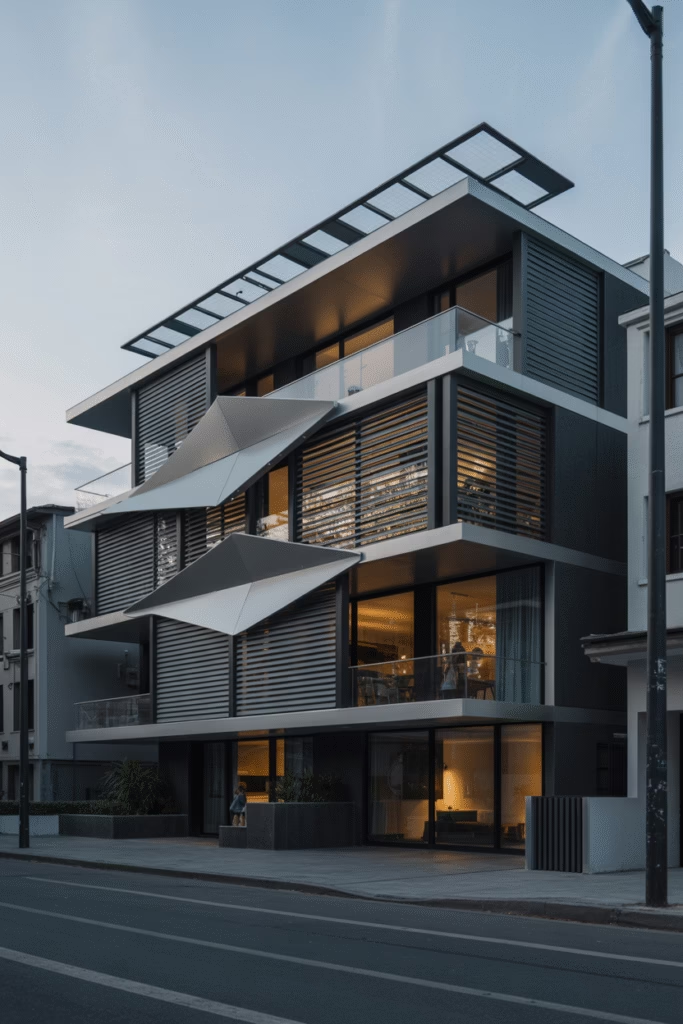
3. Holographic Accents
Holographic exterior finishes are a bold trend, using iridescent coatings that shift colors based on light and angle. Applied to cladding, window frames, or accent walls, these finishes create a prismatic effect without overwhelming the design. The materials are durable, weather-resistant, and paired with minimalist structures to balance their vibrancy, making homes stand out as modern art pieces.
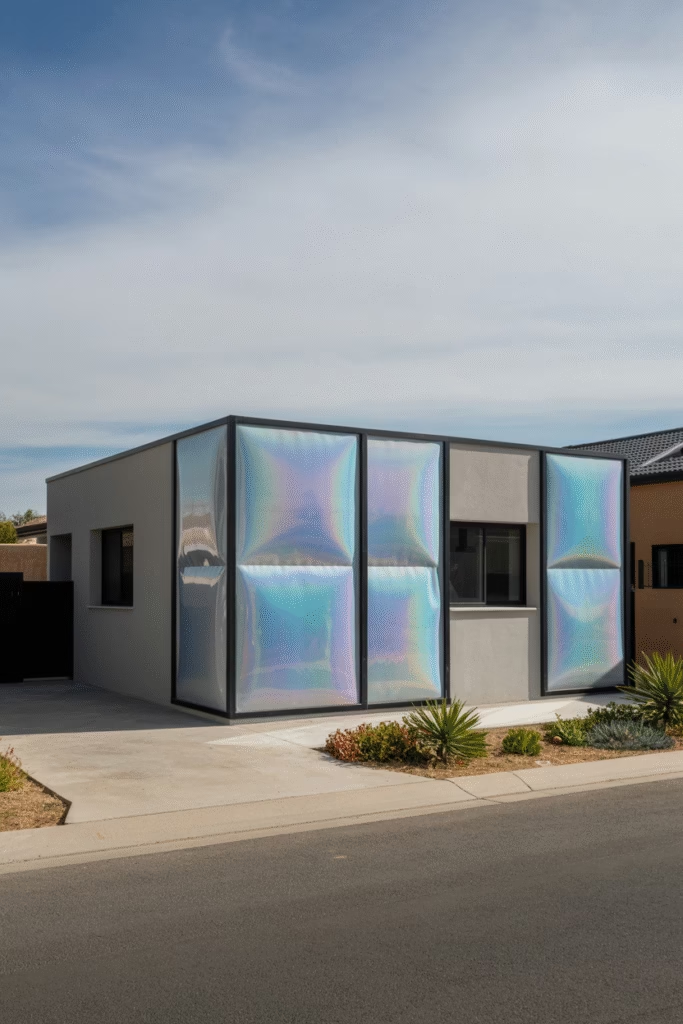
4. Parametric Wave Patterns
Inspired by parametric architecture, wave-patterned facades use 3D-printed concrete or metal panels to create fluid, undulating surfaces. These designs mimic ocean waves or organic forms, offering a sculptural aesthetic. In 2025, advancements in 3D printing make this style more accessible, with customizable patterns that add depth and movement to flat exteriors.
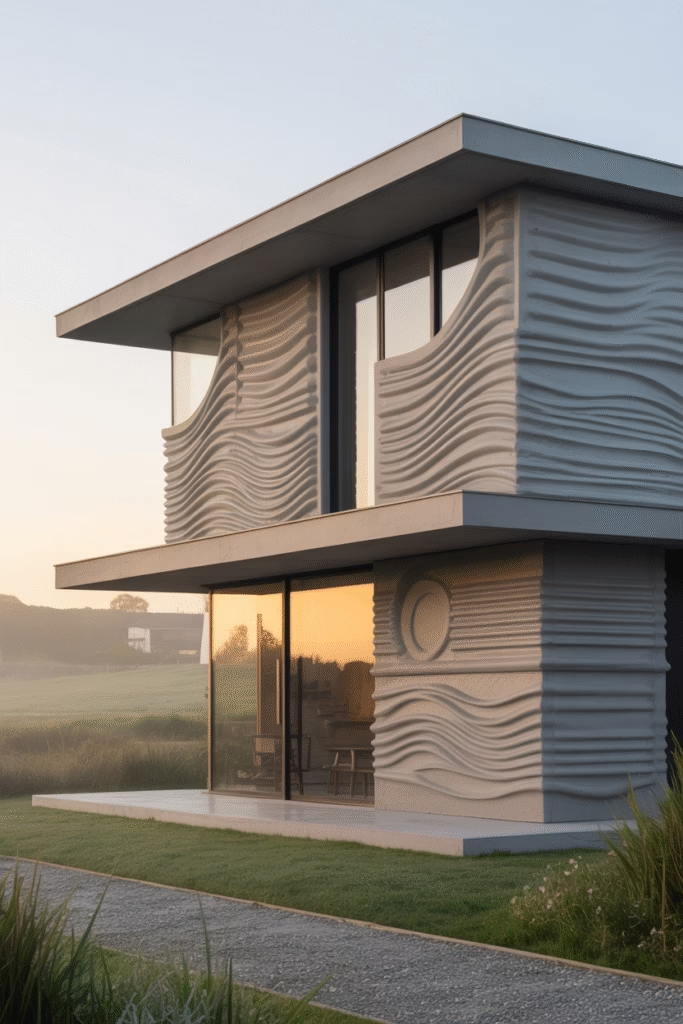
5. Smart Glass Facades
Smart glass, which transitions from transparent to opaque with a touch or sensor, is revolutionizing exterior design. In 2025, entire walls or window systems use this technology to control privacy and light. Integrated with IoT systems, smart glass can sync with weather forecasts to optimize energy use, creating sleek, tech-forward homes that adapt to their environment.
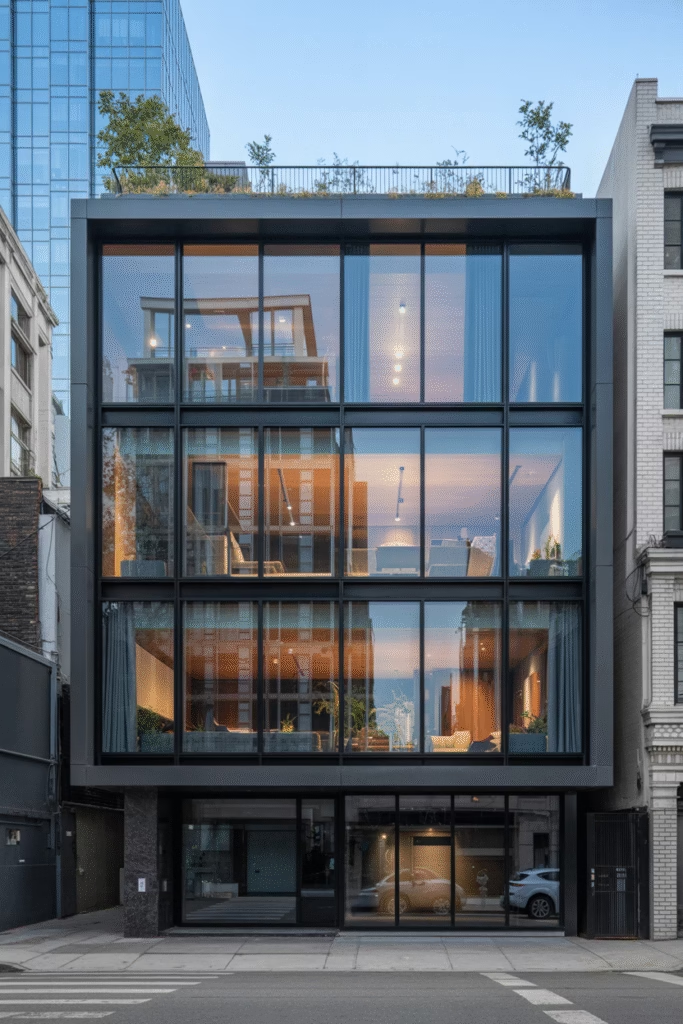
6. Corten Steel Sculptures
Rusted Corten steel, with its warm, earthy patina, is reimagined as sculptural exterior elements. In 2025, homeowners use it for geometric panels, privacy screens, or abstract installations that contrast with smooth glass or wood. Its durability and low maintenance make it ideal for striking, industrial-inspired designs that age gracefully.
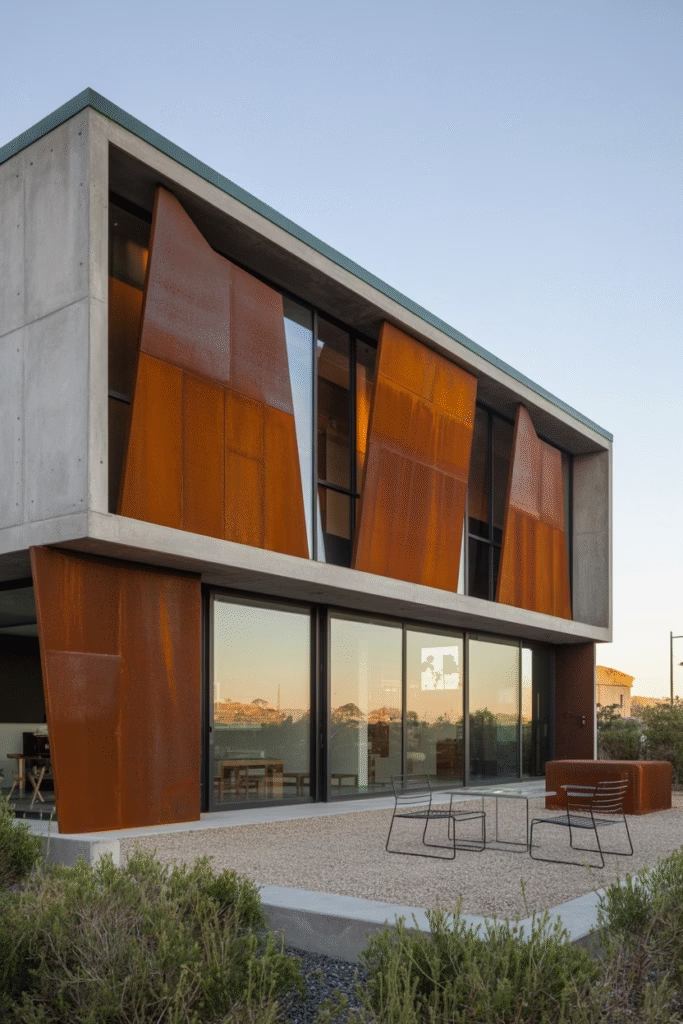
7. Augmented Reality Murals
Augmented reality (AR) murals bring exteriors to life by embedding QR codes or markers that, when scanned via smartphones, display animated designs or interactive art. In 2025, these murals are printed with weather-resistant inks on exterior walls, blending physical and digital aesthetics. Homeowners can update the AR content seasonally, ensuring a dynamic, ever-evolving facade.
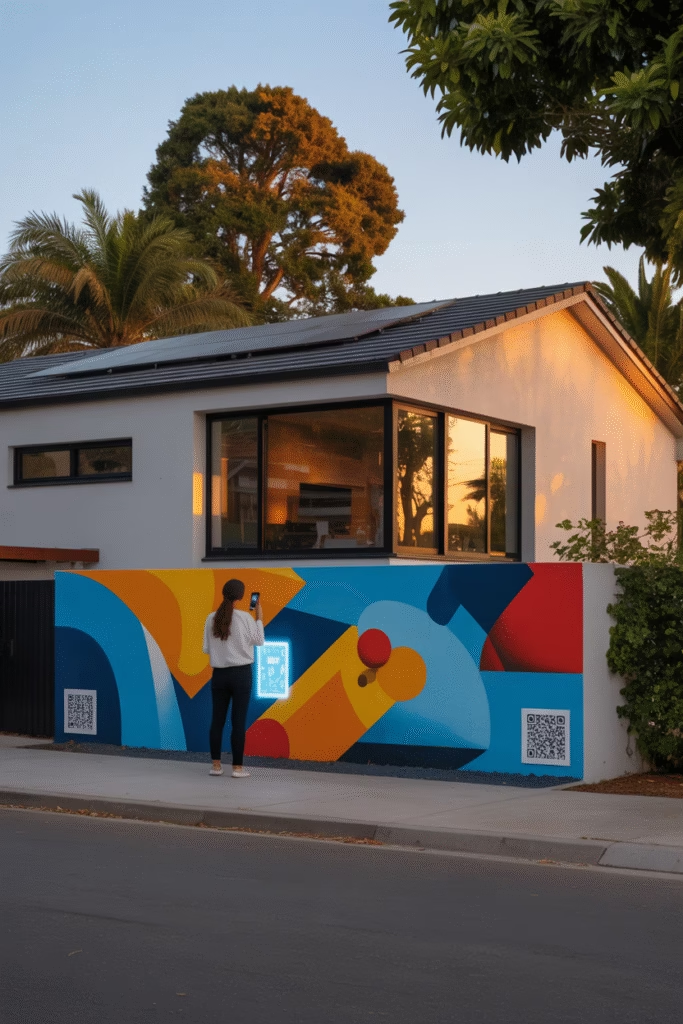
8. Modular Micro-Units
Modular micro-units are compact, stackable exterior additions that serve as studios, guest rooms, or greenhouses. Built from prefabricated, recycled materials, these units feature sleek, minimalist designs with customizable cladding like bamboo or aluminum. In 2025, they’re popular for urban homes, adding functional space without sacrificing style.
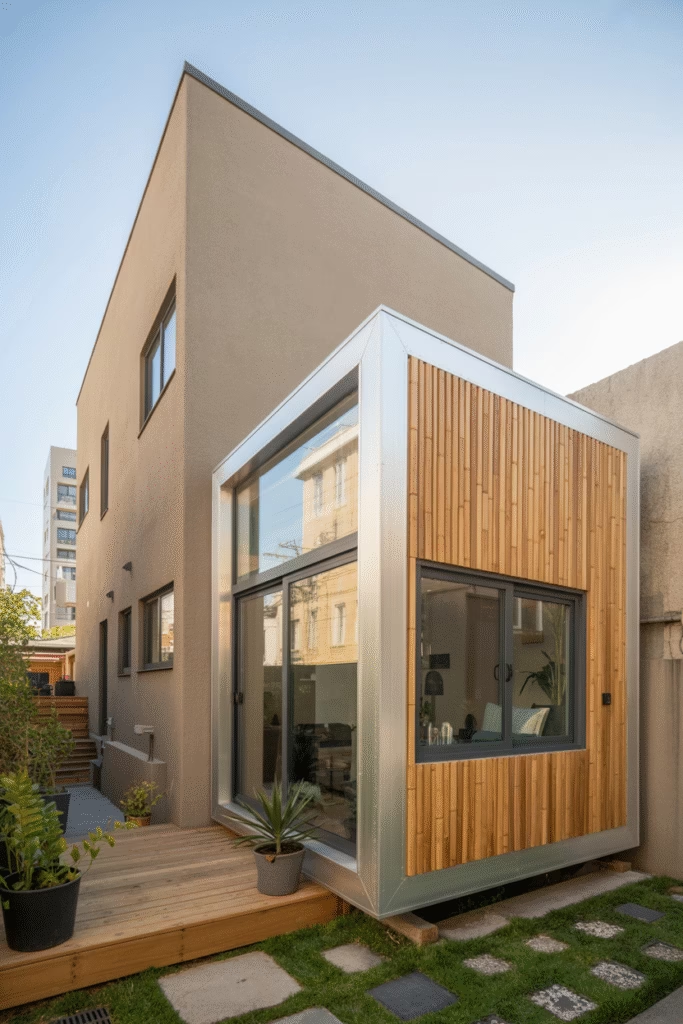
9. Bioluminescent Accents
Bioluminescent coatings, inspired by natural glowing organisms, are applied to pathways, railings, or accent panels. These eco-friendly, non-toxic materials charge during the day and emit a soft glow at night, creating enchanting exteriors. In 2025, they’re paired with dark facades for a magical, sustainable aesthetic.
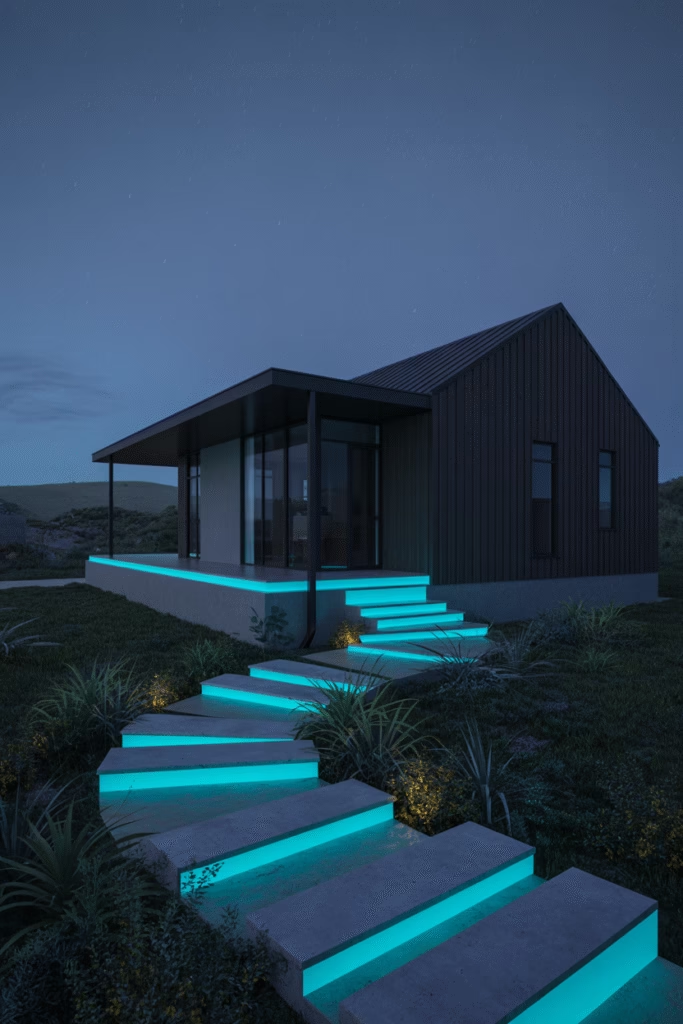
10. Asymmetrical Timber Cladding
Timber cladding gets a modern twist with asymmetrical patterns, where slats vary in width, length, and angle. Using sustainably sourced wood treated with eco-friendly sealants, this style adds texture and warmth. In 2025, it’s often combined with glass or metal for a balanced, contemporary look that feels organic yet cutting-edge.
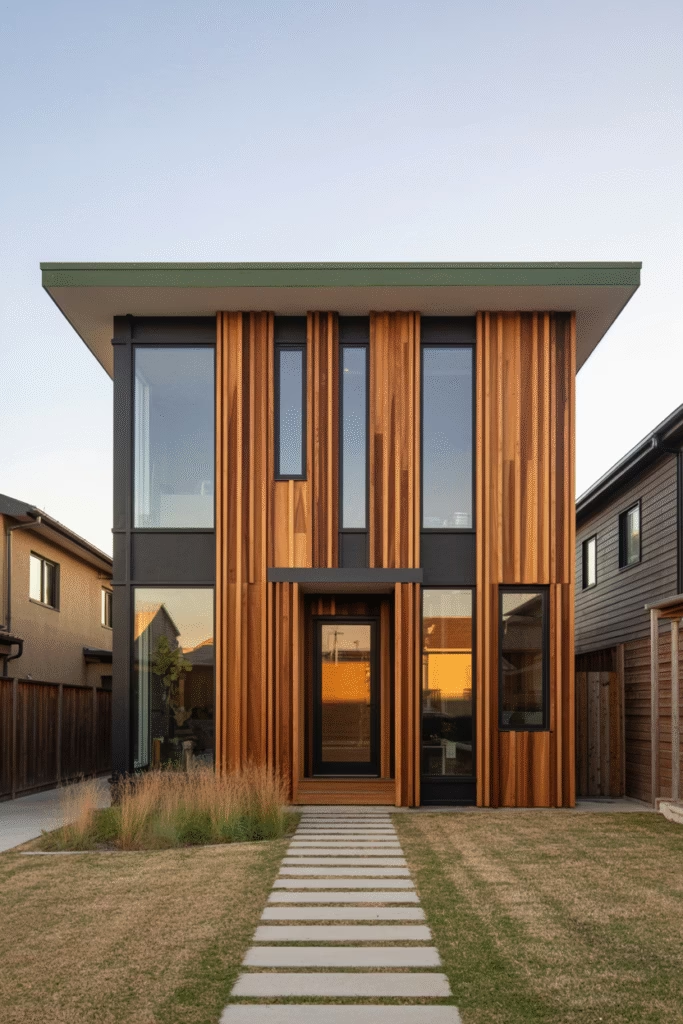
11. Solar Skin Exteriors
Solar skin technology integrates photovoltaic cells into exterior cladding, blending seamlessly with traditional materials like brick or wood. In 2025, these customizable skins generate electricity while maintaining aesthetic appeal, offering homeowners a stylish way to reduce energy costs and carbon footprints.
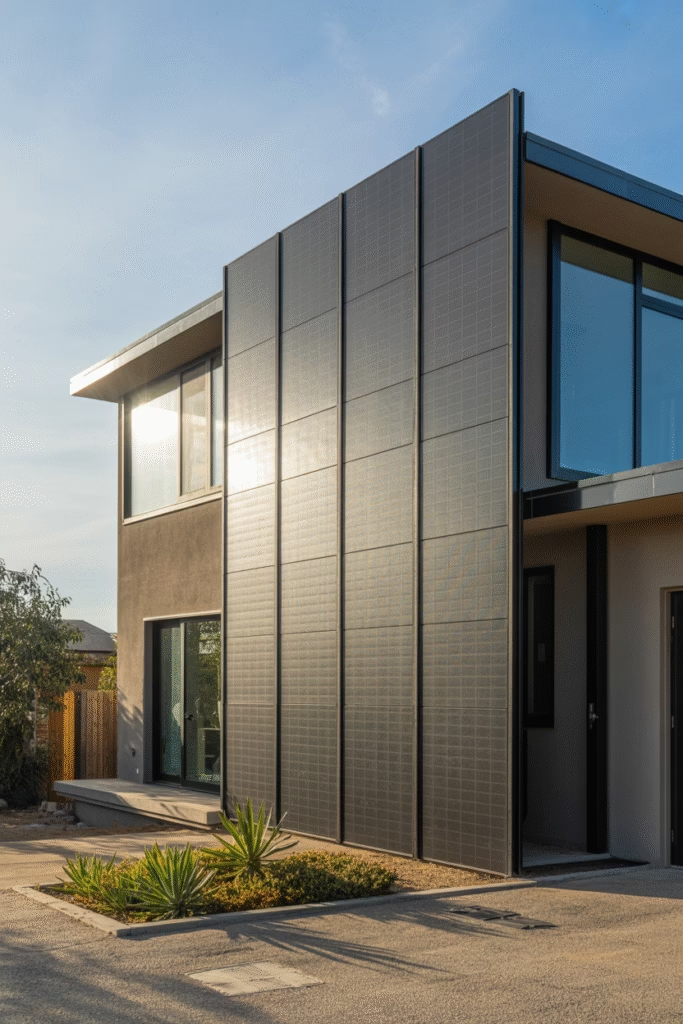
12. Floating Cantilevered Roofs
Cantilevered roofs that appear to float above the structure are a 2025 favorite. Supported by hidden steel beams, these roofs create dramatic overhangs that provide shade and shelter. Often paired with glass walls, they give homes a sleek, gravity-defying look that’s both functional and futuristic.
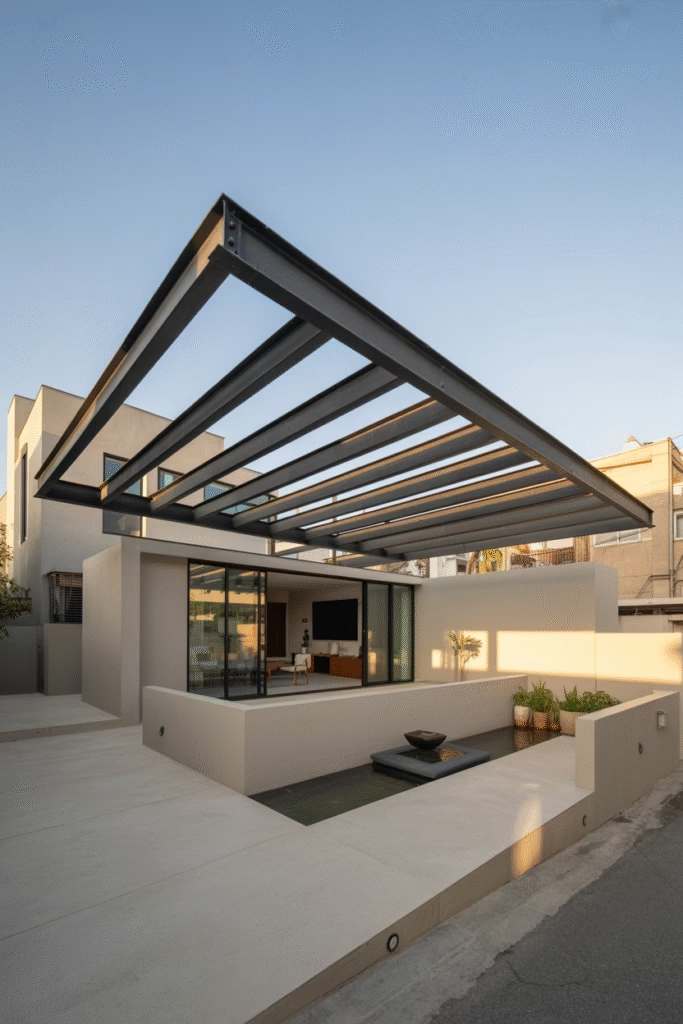
13. Textured 3D-Printed Concrete
Advancements in 3D printing allow for textured concrete facades with intricate patterns, from geometric grids to organic motifs. In 2025, these are used for entire walls or accent features, offering durability and customization. The process reduces waste, making it a sustainable choice for bold, tactile exteriors.
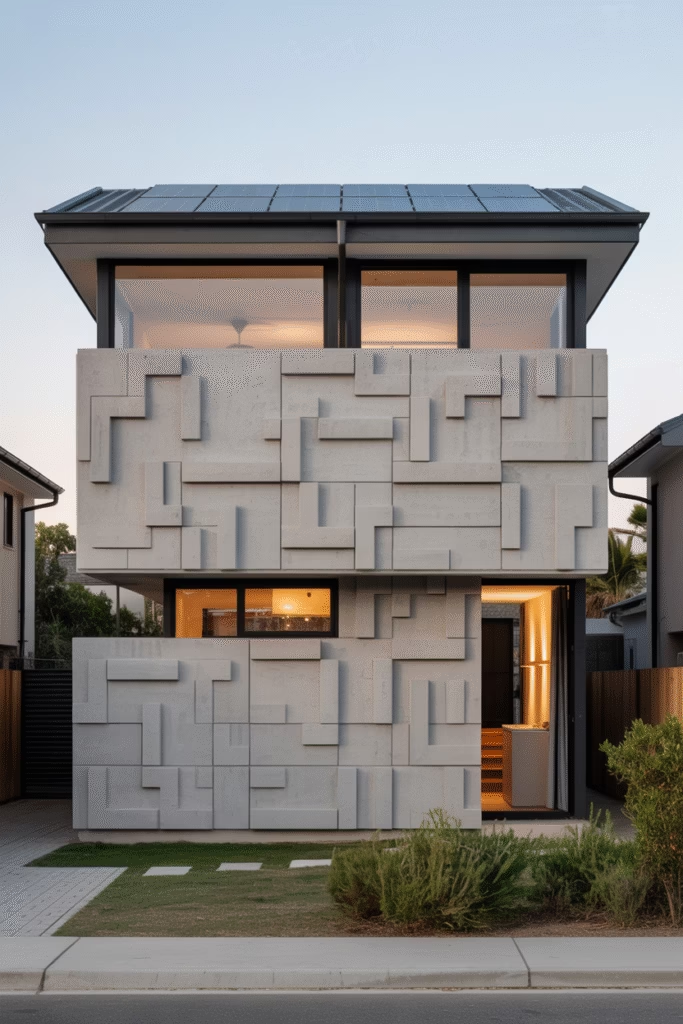
14. Interactive LED Facades
LED panels embedded in exterior walls create interactive light displays that respond to motion, sound, or touch. In 2025, these energy-efficient systems are programmed via smartphone apps, allowing homeowners to customize colors and patterns for events or moods, turning homes into vibrant, living canvases.
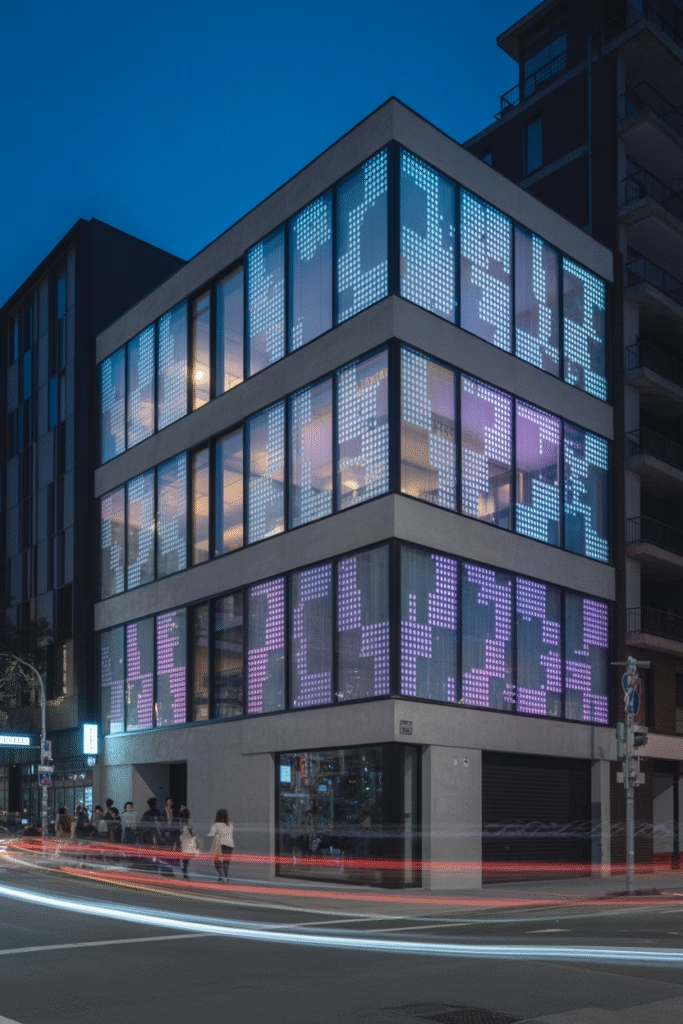
15. Recycled Plastic Shingles
Recycled plastic shingles, molded to mimic slate or cedar, are a sustainable 2025 trend. Available in vibrant colors or earthy tones, they’re lightweight, durable, and resistant to weathering. These shingles add a modern twist to traditional roofing, appealing to eco-conscious homeowners.
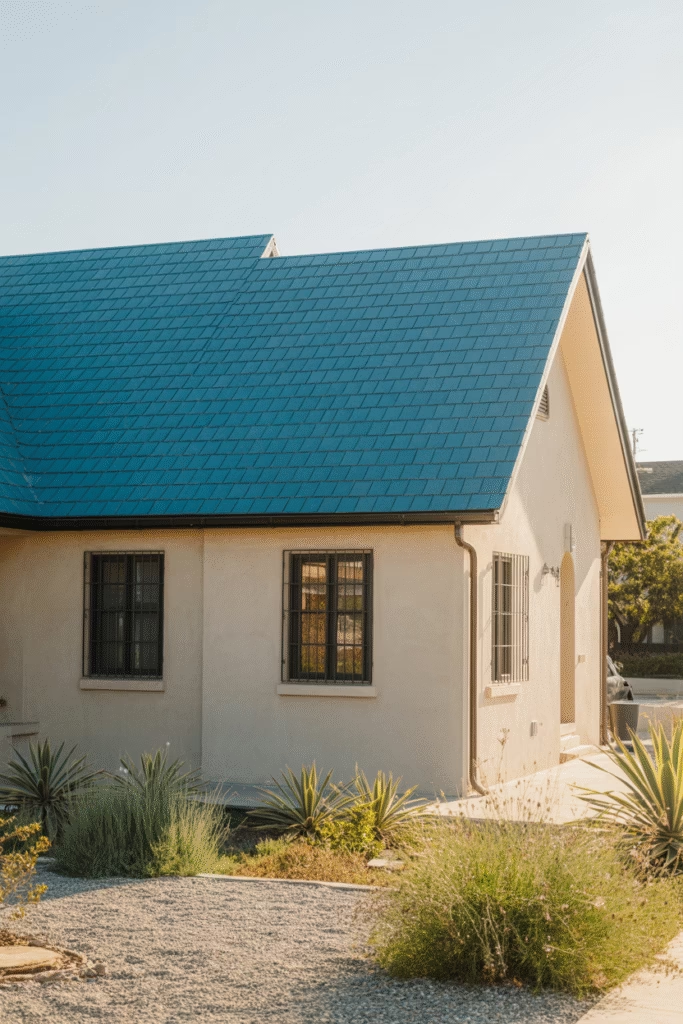
16. Origami-Inspired Panels
Origami-inspired exterior panels use folded metal or composite materials to create intricate, three-dimensional facades. In 2025, these lightweight panels are easy to install and reflect light in dynamic ways, adding depth and sophistication to minimalist homes.
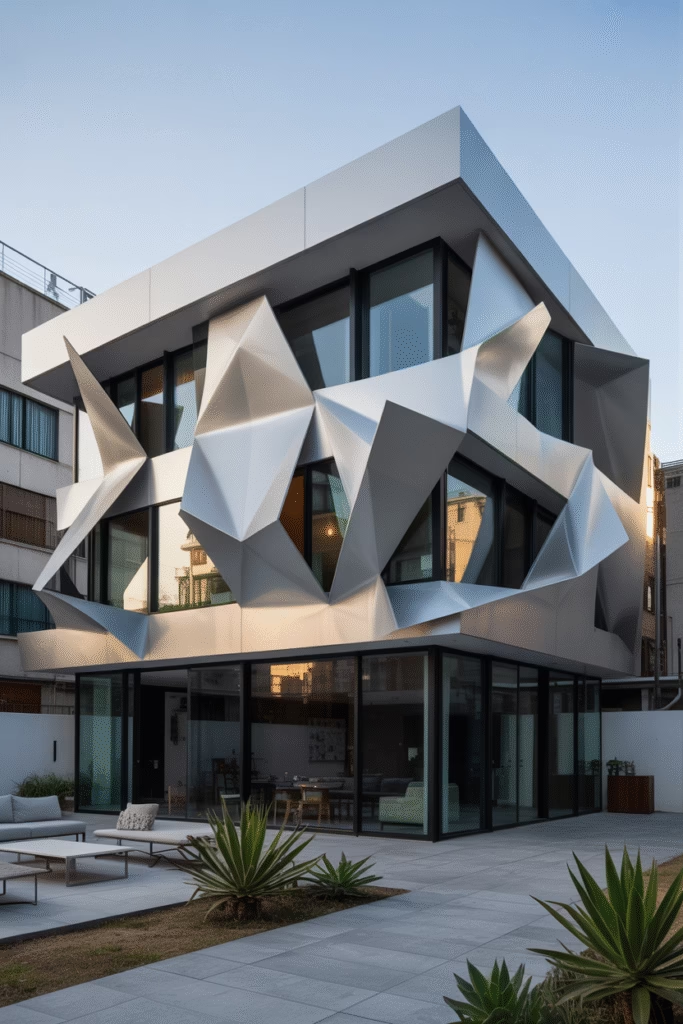
17. Transparent Solar Windows
Transparent solar windows generate energy while allowing natural light to flood interiors. In 2025, these windows are integrated into modern facades, paired with sleek metal frames for a futuristic look. They’re ideal for urban homes where space for traditional solar panels is limited.
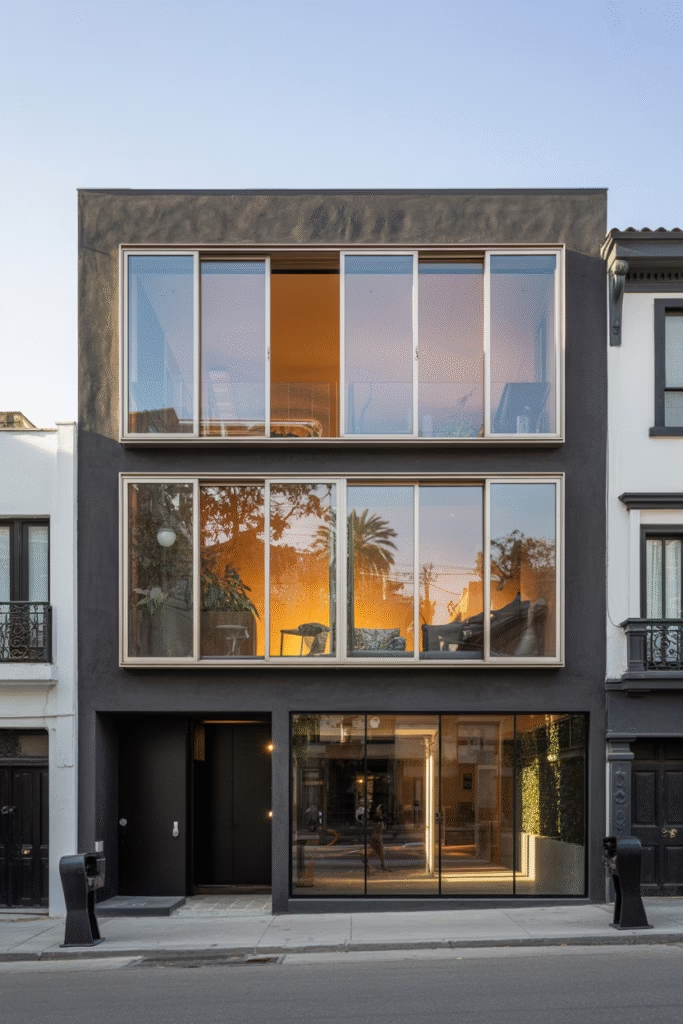
18. Living Roof Terraces
Green roofs evolve into multi-functional terraces with native plants, solar panels, and outdoor living spaces. In 2025, these roofs use modular systems for easy installation, offering insulation, stormwater management, and a unique aesthetic that blends urban and natural elements.
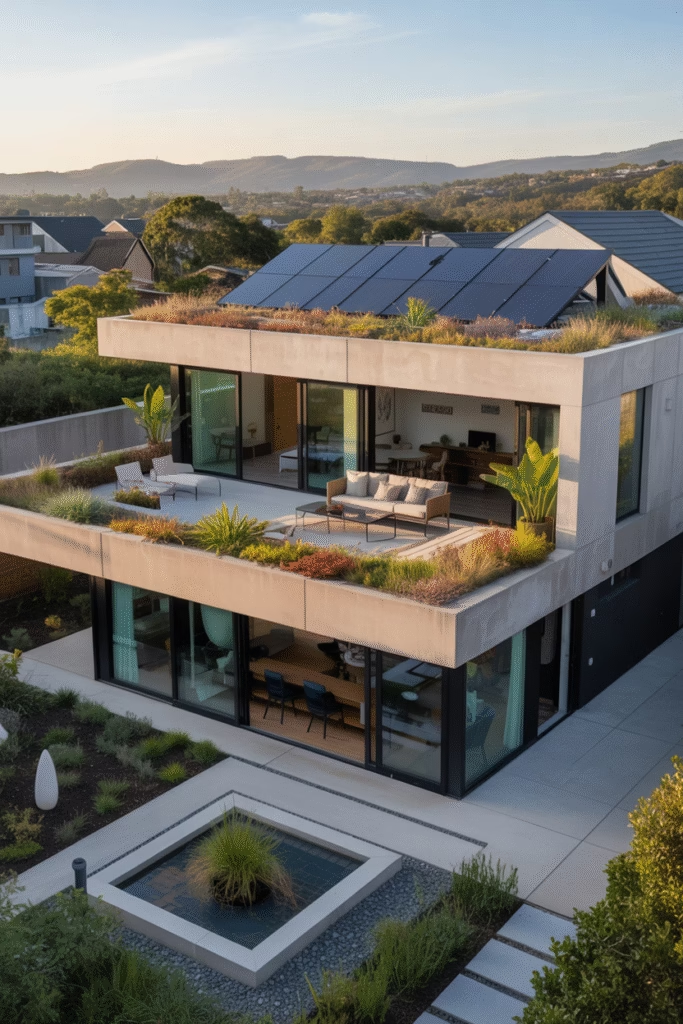
19. Metallic Mesh Screens
Metallic mesh screens, made from perforated aluminum or stainless steel, are used for privacy, shading, and decoration. In 2025, they feature laser-cut patterns inspired by cultural motifs or abstract designs, adding elegance and functionality to modern exteriors.
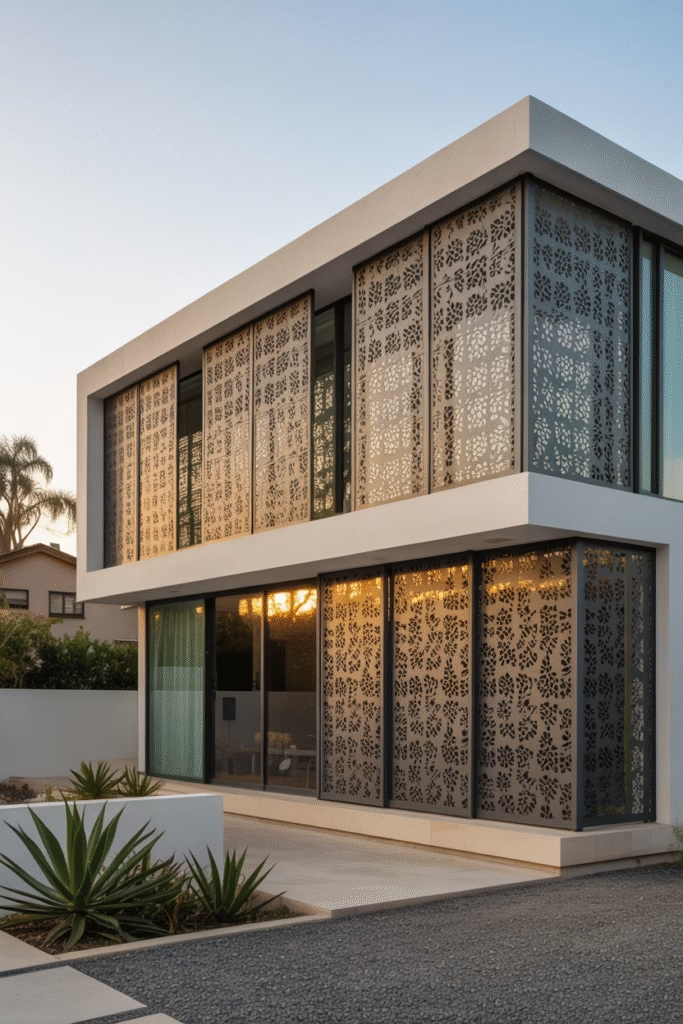
20. Adaptive Camouflage Cladding
Adaptive camouflage cladding uses materials that mimic the surrounding environment, such as stone or foliage patterns. In 2025, these are enhanced with photochromic coatings that subtly shift hues based on light, creating homes that blend seamlessly with nature while remaining visually striking.
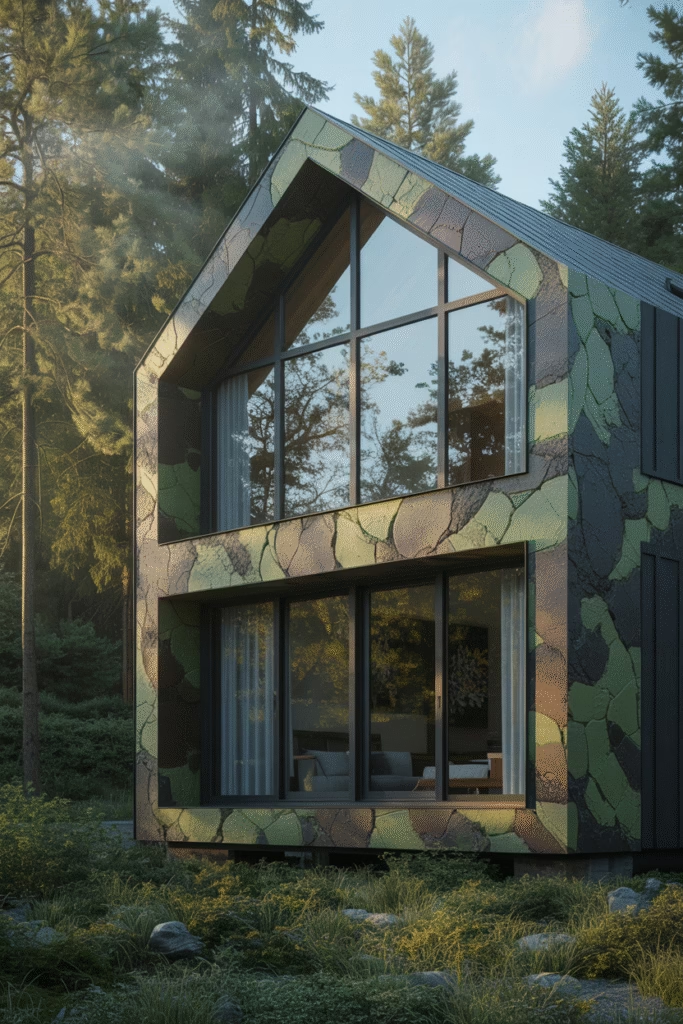
21. Inflatable Pop-Up Structures
Inflatable exterior structures, made from durable, translucent fabrics, serve as temporary pavilions, sunrooms, or art installations. In 2025, they’re powered by solar-powered air pumps and can be deflated for storage, offering a playful, futuristic addition to home exteriors.
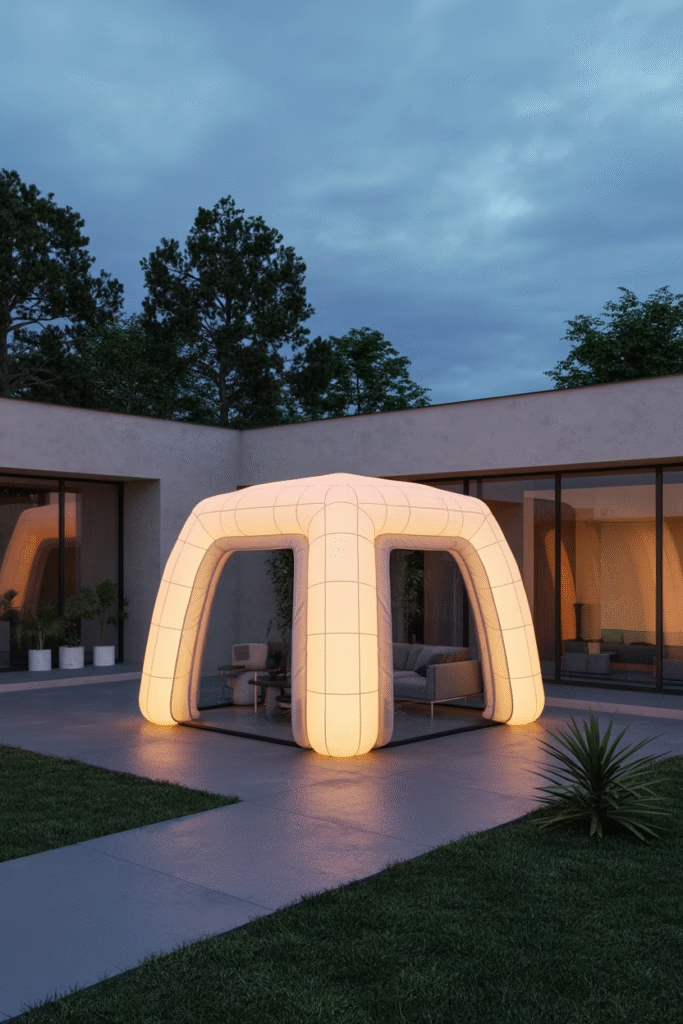
22. Retro-Futuristic Domes
Inspired by 1960s sci-fi aesthetics, retro-futuristic domes use lightweight geodesic structures clad in reflective or translucent materials. In 2025, these are used for standalone studios or integrated into larger homes, combining nostalgia with modern sustainability.
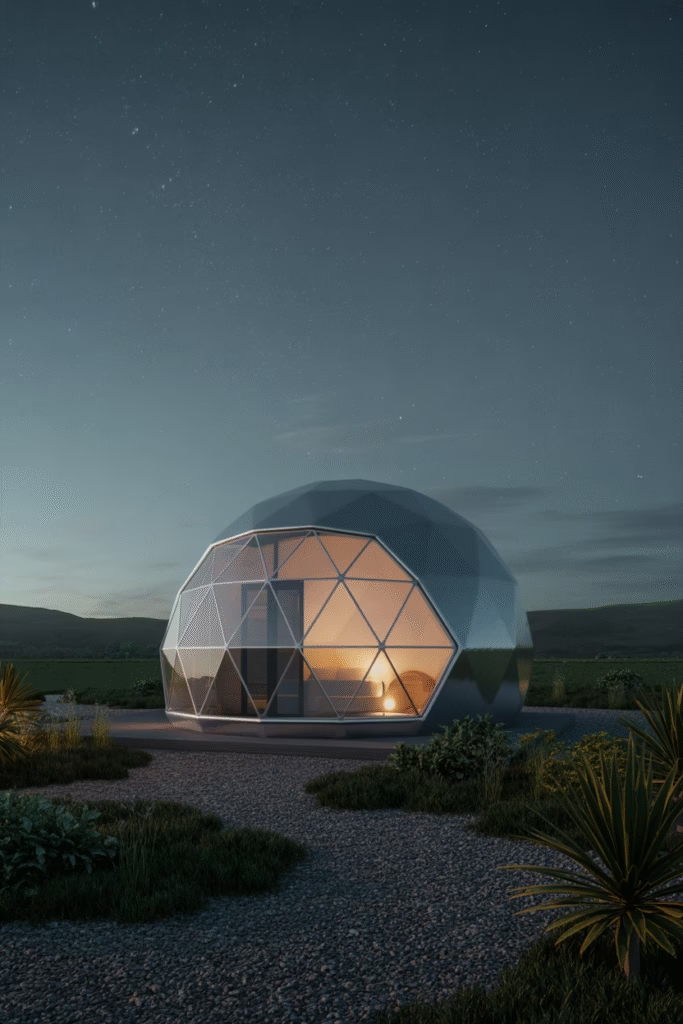
Key Facts About Unique Exterior House Styles 2025
- Sustainability First: Over 80% of these styles incorporate eco-friendly materials like recycled plastic, sustainable timber, or solar-integrated components, reflecting a global push toward net-zero homes.
- Technology Integration: Smart glass, kinetic facades, and LED systems are powered by IoT and renewable energy, making homes adaptive and energy-efficient.
- Customization Boom: 3D printing and modular designs allow homeowners to personalize exteriors, with 60% of new builds in 2025 featuring bespoke elements.
- Biophilic Surge: Styles like vertical gardens and living roofs are driven by a 45% increase in demand for nature-integrated homes, according to architectural surveys.
- Affordability Advances: Modular and prefabricated systems reduce construction costs by up to 30%, making cutting-edge designs accessible to more homeowners.
FAQs About Unique Exterior House Styles 2025
Q: Are these styles expensive to implement?
A: Costs vary, but modular systems, 3D printing, and recycled materials have lowered expenses significantly. For example, recycled plastic shingles can cost 20-40% less than traditional roofing, while smart glass may require a higher initial investment but saves on energy bills.
Q: How durable are futuristic materials like holographic coatings or kinetic facades?
A: Most 2025 materials, such as holographic coatings and kinetic panels, are engineered for durability, with lifespans of 20-50 years. They’re tested for weather resistance, UV exposure, and wear, ensuring long-term performance.
Q: Can these styles be adapted for older homes?
A: Yes, many styles, like vertical gardens, modular micro-units, or LED facades, are designed for retrofitting. Modular and lightweight materials make installation feasible without major structural changes.
Q: Are bioluminescent accents safe for the environment?
A: Bioluminescent coatings are non-toxic and eco-friendly, using synthetic compounds that mimic natural bioluminescence. They’re safe for plants, animals, and humans, with no harmful emissions.
Q: How do I choose the right style for my climate?
A: Consult with a local architect to match styles to your climate. For example, solar skins and smart glass suit sunny regions, while living roofs thrive in temperate climates with adequate rainfall.
Conclusion
The Unique Exterior House Styles 2025 offer a thrilling blend of innovation, sustainability, and personal expression. From biophilic vertical gardens to holographic accents and retro-futuristic domes, these designs push the boundaries of what a home can be while remaining practical and achievable. As technology and eco-consciousness converge, homeowners have unprecedented opportunities to create exteriors that are both functional and breathtaking. Whether you’re drawn to the organic charm of living roofs or the high-tech allure of smart glass, 2025’s architectural trends invite you to reimagine your home as a statement of style and sustainability. Start planning today to bring these visionary designs to life.

Haris Virk is the creative force and expert content strategist behind ScrapSafari.com. As an accomplished writer and designer, Haris leads the development of innovative content and visually stunning images that captivate audiences. His extensive experience in crafting engaging articles and unique design ideas makes him a pivotal contributor to ScrapSafari’s success.
Haris’s keen eye for aesthetics and trend forecasting ensures that every piece he produces not only informs but also inspires readers. His proficiency extends to mastering Pinterest strategies, where his thoughtfully crafted pins drive significant traffic and amplify the site’s reach.
With a passion for creativity and a deep understanding of content dynamics, Haris Virk brings a distinctive blend of originality and strategic thinking to the ScrapSafari team, solidifying its place as a go-to source for design, ideas, and inspiration.
